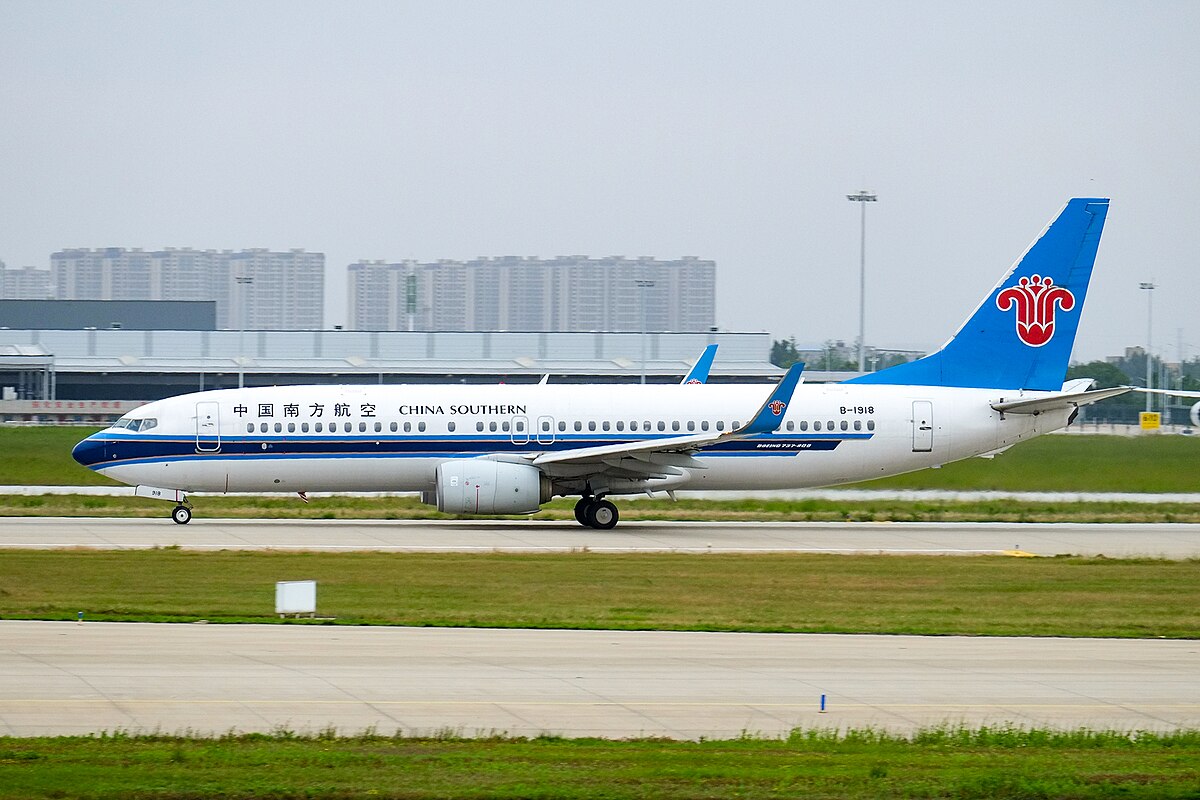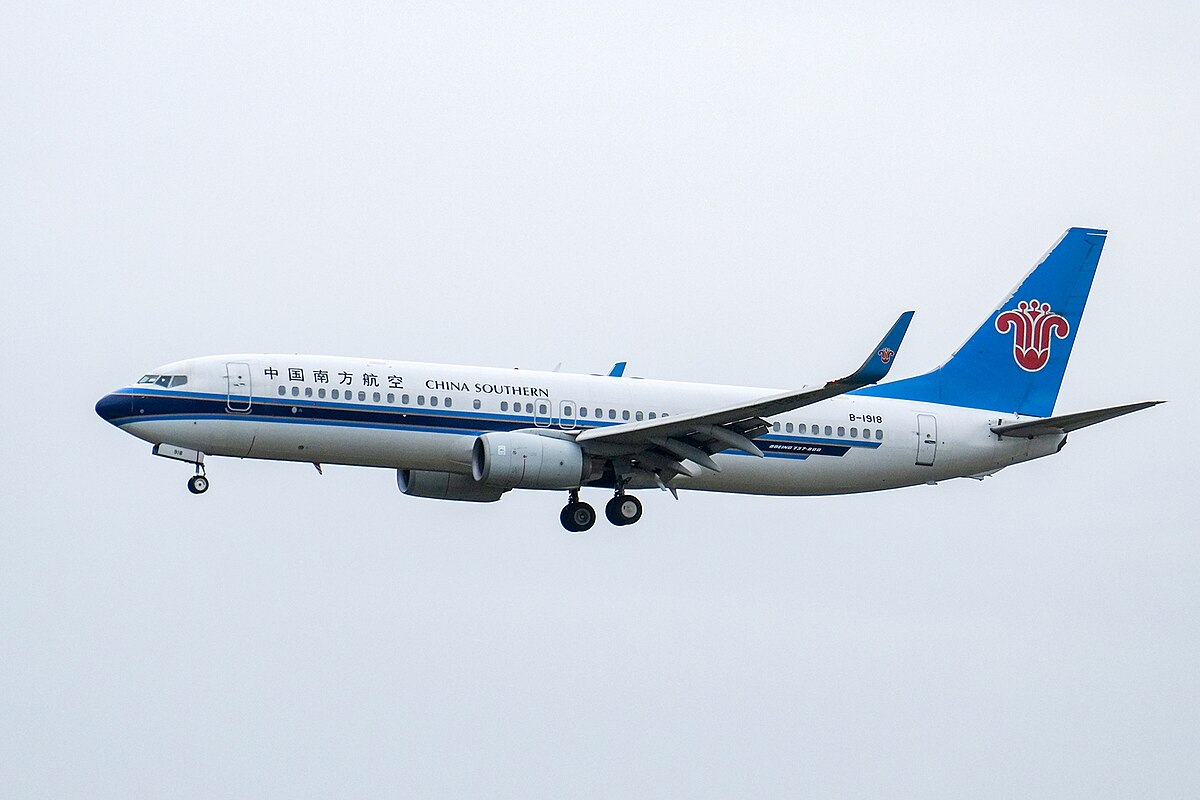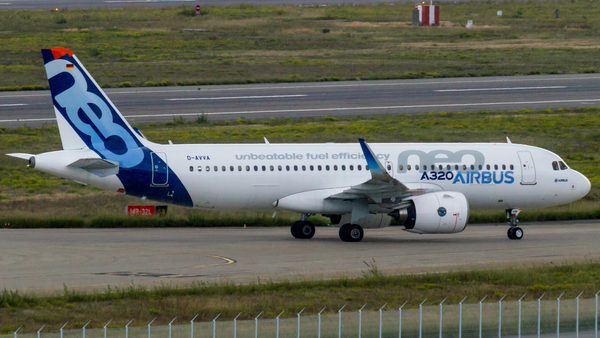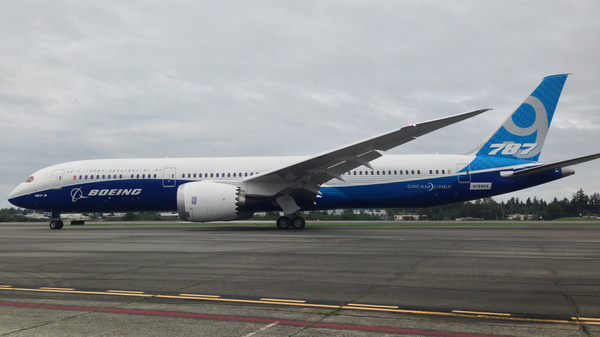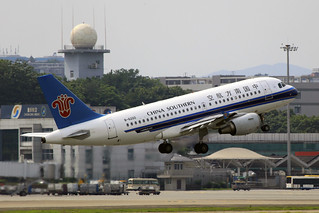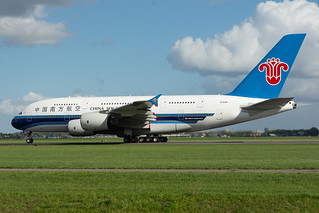China Southern B738 at Hong Kong on Nov 13th 2018, landed on occupied runway
Last Update: July 19, 2023 / 17:04:14 GMT/Zulu time
Incident Facts
Date of incident
Nov 13, 2018
Classification
Report
Airline
China Southern Airlines
Flight number
CZ-6045
Departure
Yiwu, China
Destination
Hong Kong, China
Aircraft Registration
B-1918
Aircraft Type
Boeing 737-800
ICAO Type Designator
B738
On Jul 19th 2023 Hong Kong's AAIA released their final report concluding the probable cause of the incident rated a runway incursion was:
The controller cleared an arriving aircraft to land when he inadvertently misperceived that the runway was clear whereas the preceding landing had not yet vacated the runway.
Contributing Factors
The preceding aircraft took an unusually long time to vacate the runway after landing by as much as 70% more than the average Runway Occupancy Time of Arrivals at VHHH, thus contributed to the development of a tight catch-up situation.
The AAIA analysed the performance of the business jet:
During the investigation interview, both pilots reported that they were well rested prior to the flight. They also advised that they had landed at VHHH before (six to seven times for PF and twice for PM) and were aware of the location of RET A7.
The DFDR indicated that the aircraft touched down at a speed of 99 kts at about 19:46:10. Three seconds after touchdown, the crew activated both thrust reversers and brakes.
The aircraft completed its landing roll and slowed to taxiing speed of around 10 kts before passing RET A6, with RET A7 more than 400 metres ahead, a distance which took 40 seconds of taxiing time by the GL5T.
As RET A6 was designed for landing on RWY 25R, no lead off lights could be seen by the pilots at the location of the GL5T taxiing in the opposite (RWY 07) direction.
...
As a result of the long taxi distance at a slow speed, the GL5T occupied the runway for a total of 85 seconds, which was longer than the average ROTA of 50 seconds by 70%. This is not aligned with the AIPHK, which stipulated that pilots should vacate the runway as quickly as practicable to enable ATC to apply minimum spacing on final approach thereby maximising runway utilisation and minimising the occurrence of missed approaches.
The AAIA analysed the performance of the B738:
The pilots of the B738 were aware of the preceding aircraft and had been advised to expect a late landing clearance by the controller. The controller issued a landing clearance when the B738 was close to the beginning of the runway.
Whilst on final approach both pilots of the B738 saw the lights of the GL5T ahead. Before touching down, they conducted a quick scan of the touchdown zone of the runway and then concentrated on navigating the aircraft. During this quick scan, no abnormal lights were observed.
For visual surveillance, a larger size of an object and a higher level of ambient illumination will make it easier for the object to be detected visually. The size of the GL5T and the time of the incident at night contributed to the failure of the B738 pilots to visually detect the GL5T while they were preparing for landing. The nose-up attitude of the aircraft when it was close to the runway surface in the final stage of landing also imposed a limitation to the forward external view of the pilots from the cockpit.
Without noticing any visual clue indicating the runway was still occupied, the pilots of the B738 believed that the GL5T had already vacated the runway when the controller issued the landing clearance.
An ATC clearance to land does not relieve pilots of their responsibility to go around if required. Both pilots of the B738 were ready and prepared for a go-around in case it was necessary to do so, as ATC had advised them to expect a late landing clearance. The pilots advised the investigation team that even after receiving the landing clearance, they would still be prepared for a go-around if they considered it unsafe to land. In this case, since the pilots did not notice abnormal lights on the runway, they believed that the runway was clear for their landing.
The AAIA analysed the performance of the Tower controller:
According to the controller, traffic volume on the day of the incident was moderate and normal, being “not too relaxed or too busy” as he recalled during the investigation interview. The Aerodrome Control Supervisor (ASU) on duty during the time of the incident also considered that the traffic volume was normal. This incident occurred 17 minutes after the controller returned from a 90-minute break to take over the AMN control position. The controller did not suggest fatigue was a factor when he subsequently reviewed the incident with the ASU or during the interview with the investigating team.
When the GL5T landed, the B738 was 3.2 NM from the runway. This was not unusual with the traffic movement rate at VHHH. The controller was aware of the situation and the need for it to be managed. When clearing the GL5T to land, he instructed it to expedite vacating the runway after landing. He also advised the B738, while the aircraft was on final approach, to expect a late landing clearance.
After the GL5T landed, the controller instructed it to vacate the runway via RET A5, which was already more than 400 metres behind the GL5T. During the interview, the controller explained that he had inadvertently instructed the GL5T to vacate via A5 whereas his intention was actually A7. The incorrect instruction, however, did not have any impact on the incident as the GL5T had already passed A5 and was accelerating on the runway towards RET A7.
During the interview, the controller also recalled that when he gave the landing clearance to the B738, his visual observation showed that the GL5T had reached the entry of A7 with its nose turning onto A7 and its speed was increasing. Yet, the GL5T was still taxiing on the runway at that moment.
When the controller subsequently noticed that the GL5T had in fact not yet vacated the runway, he considered it too late to instruct the B738 to go around as it had already landed on the runway.
The AAIA reasoned the rating as an incident after the initial rating "serious incident":
When the B738 landed it was 1,470 metres behind the GL5T. This distance was reduced to slightly more than 1,000 metres by the time the GL5T vacated the runway.
By means of the RISC Calculator, the investigation team obtained Severity Classification “C” for this occurrence, i.e. there was ample time and/or distance to avoid a collision. The initial classification of this occurrence as Serious Incident in the Preliminary Report is therefore revised as Incident according to the ICAO Doc 9870 Severity Classification Scheme quoted in 2.5(1) above.
Incident Facts
Date of incident
Nov 13, 2018
Classification
Report
Airline
China Southern Airlines
Flight number
CZ-6045
Departure
Yiwu, China
Destination
Hong Kong, China
Aircraft Registration
B-1918
Aircraft Type
Boeing 737-800
ICAO Type Designator
B738
This article is published under license from Avherald.com. © of text by Avherald.com.
Article source
You can read 2 more free articles without a subscription.
Subscribe now and continue reading without any limits!
Read unlimited articles and receive our daily update briefing. Gain better insights into what is happening in commercial aviation safety.
Send tip
Support AeroInside by sending a small tip amount.
Related articles
China Southern A20N at Hangzhou on May 31st 2025, passenger battery and charger emit smoke
A China Southern Airlines Airbus A320-200N, registration B-32FV performing flight CZ-6850 from Hangzhou to Shenzhen (China), was climbing out of…
China Southern B789 at Guangzhou on Oct 21st 2024, tail strike on landing
A China Southern Airlines Boeing 787-9, registration B-1243 performing flight CZ-3534 from Shanghai Hongqiao to Guangzhou (China), landed on…
China Southern A319 at Lijang on Jun 9th 2022, rejected takeoff due to engine failure
A China Southern Airlines Airbus A319-100, registration B-6200 performing flight CZ-3488 from Lijang to Guangzhou (China), was accelerating for…
China Southern A320 at Shijiazhuang on Nov 2nd 2019, nose gear problem on landing
A China Southern Airbus A320-200, registration B-9911 performing flight CZ-6540 from Guangzhou to Shijiazhuang (China) with 143 people on board,…
China Southern A388 enroute on May 26th 2019, hail strike
A China Southern Airlines Airbus A380-800, registration B-6140 performing flight CZ-3101 from Guangzhou to Beijing (China), was enroute at 11,300…
Newest articles
UPS MD11 at Louisville on Nov 4th 2025, burst into flames on takeoff
A UPS United Parcel Service McDonnell Douglas MD-11, registration N259UP performing flight 5X-2976 from Louisville,KY to Honolulu,HI (USA) with 3…
India A20N near Bhopal on Nov 3rd 2025, cargo smoke indication
An Air India Airbus A320-200N, registration VT-EXO performing flight AI-2487 from Delhi to Bangalore (India) with 172 people on board, was enroute at…
Subscribe today
Are you researching aviation incidents? Get access to AeroInside Insights, unlimited read access and receive the daily newsletter.
Pick your plan and subscribePartner

ELITE Simulation Solutions is a leading global provider of Flight Simulation Training Devices, IFR training software as well as flight controls and related services. Find out more.
SafetyScan Pro provides streamlined access to thousands of aviation accident reports. Tailored for your safety management efforts. Book your demo today
AeroInside Blog
Popular aircraft
Airbus A320Boeing 737-800
Boeing 737-800 MAX
Popular airlines
American AirlinesUnited
Delta
Air Canada
Lufthansa
British Airways
